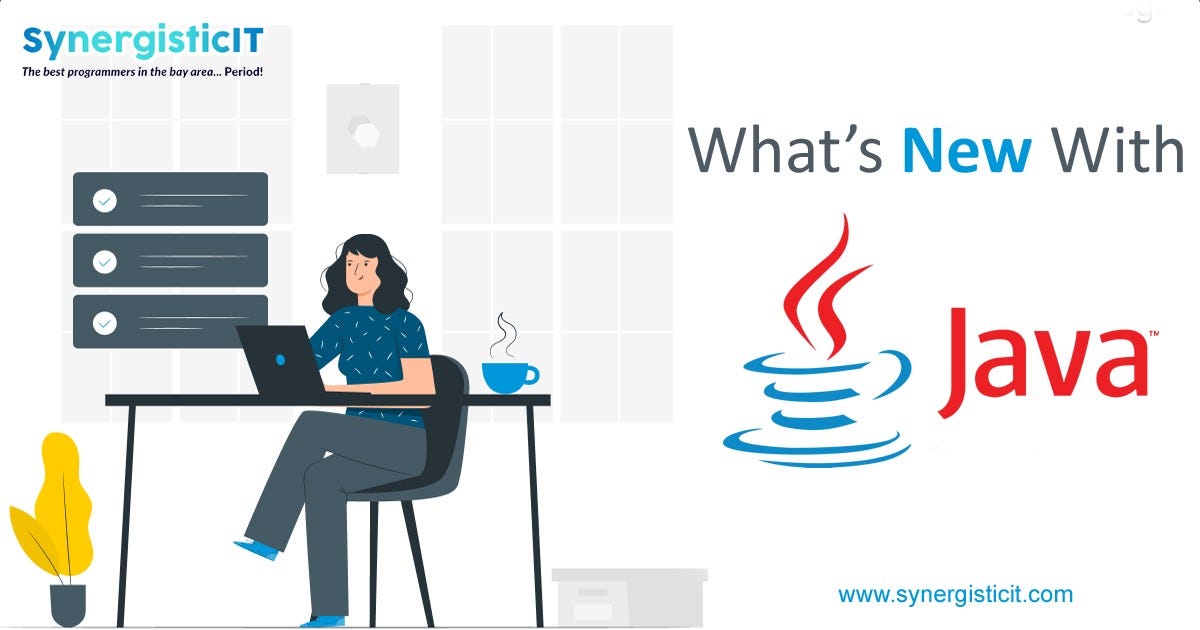What Are The New Features In Java 18?

Java programming will be celebrating its 27th anniversary in May this year. Developed at Sun Microsystems by James Gosling, it was launched with the tagline “Write Once, Run Anywhere.” It is now used in numerous applications, from web servers to embedded systems and IoT devices. With Java, you can develop and deploy applications across major platforms.
Over the years, there have been considerable advances in Java coding. During the earlier stages, the development was not very regular as there were delays due to the development of large features in new releases.
However, in 2017, Oracle declared that there would be new feature releases every six months without waiting for the development of large features. This new time-based release cadence helped Java evolve faster and stay more competitive.
Java feature versions are released regularly every six months. These releases get support for six months, with quarterly updates for bug fixes and critical security patches. An LTS (Long Term Support) version, on the other hand, is released every three years and receives support for about eight years.
The most recent version, JDK 17, which came on 14 September 2021, was an LTS version. You can also consider JDK 17 as a “roll-up” release for all the features introduced in feature updates over the last three years since the LTS release.
The next release Java JDK 18, is scheduled for release on 22 March 2022. It will be the latest version of standard Java. This new version will come with nine new features. You can find the early-access builds of JDK 18 on operating systems including Windows, Linux, and macOS at java.net.
As a Java developer, you can choose between a “minor migration strategy” or an “LTS strategy.” If you select the minor migration strategy, you can migrate to new features releases every six months and benefit from updated features and performance improvements. But if you choose the “LTS strategy,” you can migrate to new releases every three years. Even though the change rate for Java applications is lower in the case of LTS, companies like to go with the LTS strategy.
You can learn Java programming from scratch very quickly by enrolling in a Java coding bootcamp. It will teach you core Java skills to start a Java programming career.
What Are The New Features In Java 18?
If you go through the OpenJDK page, you will find there a list of all the features enhancements in the JDK 18 version, including a simple web server, a UTF-8 charset, a third incubation of the vector API, the second incubator of a foreign function, and memory API, code snippets in Java API documentation, a reimplementation of core reflection with method handles, the second preview of pattern matching for switch, and the deprecate finalization for removal.
As of now, all the features are frozen. After two rampdown phases conducted between December and February, JDK 18 has now entered the release candidate stage.
Features Mentioned in the JDK 18 proposal are explained in detail below.
Deprecate Finalization For Removal In A Future Release: Finalization was introduced in Java 1.0 to help prevent resource leaks. But it has many flaws like unpredictable latency, unconstrained behavior, etc., that have caused significant security, performance, credibility, and maintainability issues over the years. Till now, it is enabled by default, but a plan is in place to remove it in the later releases. In Java 9, it was deprecated, and in this version, it will be deprecated for removal. The goal here is to make developers understand the flaws in finalization, migrate to other tools and prepare for its removal in later stages.
Internet-Address Resolution SPI: Define a service-provider interface (SPI) for host name and address resolution so that apart from JDK built-in resolver, the java.net.InetAddress can also make use of resolvers. A resolver SPI will help implement the DNS client protocol in Project Loom, enable testing and prototyping, allow seamless integration of new network protocols and customization.
Pattern Matching For Switch (Second Preview): Pattern Matching for the switch was introduced in JDK 17 as a preview feature. In JDK 18, a second preview is proposed with enhancements based upon previous experience and feedback. Pattern matching for switch statements and expressions will allow them to be tested against various patterns, each having a specific action. It will help express complex data-oriented queries in a concise and secure manner.
The Reimplementation Of Core Reflection With Method Handles: Reimplementation of Constructor, Java.lang.reflect.Method, and Field on top of Java.lang.invoke method handles. By making method handles the underlying mechanism for core reflection, the maintenance and development costs of the Java.lang.invoke and Java.lang.reflect APIs would be reduced.
Simple Web Server: A command-line tool would provide a minimal web server that’ll cater to static files and could be used for ad-hoc coding, prototyping, and testing, especially in educational contexts. It will offer an out-of-the-box static HTTP file server that’s easy to set up and offers minimal functionality. The goal is to lessen developer activation energy and make JDK approachable and offer a default implementation through the command line along with a small API for programmatic creation and customization.
Vector API (Third Incubator): Having incubated previously in JDK 16 and JDK 17, the vector API would be incubated in the JDK 18 for the third time. This API would express vector computations that compile at runtime to optimal vector instructions on compatible CPU architectures, thus attaining performance greater to equivalent scalar computations.
UTF-8 by Default: UTF-8 or Unicode Transformation Format- 8-bit is an encoding system for electronic communication. By specifying UTF-8 as the default charset for standard Java APIs, all the APIs depending upon the default charset will start behaving consistently across all operating systems, locales, configurations, and implementations.
Code Snippets in Java API Documentation: Introduction of a new inline @snippet tag for JavaDoc’s Standard Doclet will make the inclusion of source code fragments in the API documentation. It will also help facilitate the validation of fragments by offering API access to them and enabling modern styling and better IDE support.
So, these were all the enhancements and features that are set for release in JDK 18.
Synergistic offers the best Java Training in Indianapolis to aspiring tech professionals. Combined with hands-on training and career assistance, this training will develop the right skills you need to secure a high-paying job.
Source: https://jenahaley54.medium.com/what-are-the-new-features-in-java-18-615ed445761e

Comments
Post a Comment